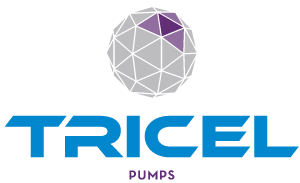SECTIONAL & One-Piece TANK & PUMP FAQ'S
What type of water tank do I need?
The type of water tank you may need is dependent on what you are looking to use the tank for.
One Piece water storage tanks are ideal for cost effective water storage solutions. Sizes range from 10 litres to 4500 litres. One piece tanks can be used for both indoor and outdoor storage purposes.
Sectional water storage tanks are ideal for where space restrictions are an issue, and for storing large volumes of water.
For storing drinking water, you will need a potable water tank, like these GRP tanks. They can store drinking water, prepare food, and clean dishes while meeting government regulations for safe water storage.
In non-potable water tanks, water can be used for flushing toilets and watering plants but cannot be consumed by people.
There are many types of water tanks available at Tricel. Contact our sales team if you’d like help choosing your water tank.
What are GRP water tanks used for?
GRP water storage tanks can be used for a wide range of applications including domestic, commercial, industrial and agricultural industries.
How much clearance is required around the tank for installation and maintenance?
Base and access requirements differ slightly for the various tank designs. For information about the clearance required around the tank for installation and maintenance click here.
What is the difference between potable and non-potable water?
Potable water storage tanks are suitable for the safe storage of drinking water. Non-potable or grey water tanks are used for water storage that has not been passed for human consumption, but may still be used for many other purposes, depending on its quality.
What is a Format 30 water tank?
A Format 30 water storage tank will be complete with a heavy-duty panel cover, screened overflow and breather, having roof and sidewall panels insulated with encapsulated CRC-Free polyurethane foam.
What size water tank do I need?
We do not give water tank capacities but as a guideline please use our water tank calculator.
What is the difference between actual and nominal capacity?
Nominal capacity: is the volume of the tank when it is filled to the top.
Actual capacity: is the volume of the tank when filled to maximum working level.
Where can I obtain an O&M manual?
Please visit our downloads section in order to view our Operations and Maintenance manual.
Do your tanks have CE Certification?
CPR (Construction Products Regulations 305/2011) covers products that are covered by Harmonised European Standards for example waste water treatment systems. CE marking & certification does not apply to products that are not covered by Harmonised European Standards. GRP cold water storage tanks are not covered by such a standard however we do manufacture our tanks in accordance to BS6700, ISO9001-2015 & they carry WRAS approval.
What are different types of pumps?
Basically, there are two types of pumps: A Centrifugal Pump B: Positive Displacement pump!
Positive Displacement = rotary lobe pump, progressive cavity pump, rotary gear pump, piston pump, diaphragm pump, screw pump, gear pump, Hydraulic pump, vane pump
Centrifugal Pumps = end-suction pumps, in-line pumps, double suction pumps, vertical multistage pumps, horizontal multistage pumps, submersible pumps, self-priming pumps, axial-flow pumps, regenerative pumps.
What is the basic difference between single-stage and multi-stage centrifugal pump?
The Single-stage pump has one impeller and the multi-stage pump has two or more impellers in series!
GRP water storage tanks can be used for a wide range of applications including domestic, commercial, industrial and agricultural industries.
Toggle Content
Base and access requirements differ slightly for the various tank designs. For information about the clearance required around the tank for installation and maintenance click here.
Potable water storage tanks are suitable for the safe storage of drinking water. Non-potable or grey water tanks are used for water storage that has not been passed for human consumption, but may still be used for many other purposes, depending on its quality.
A Format 30 water storage tank will be complete with a heavy-duty panel cover, screened overflow and breather, having roof and sidewall panels insulated with encapsulated CRC-Free polyurethane foam.
We do not give water tank capacities but as a guideline please use our water tank calculator.
Nominal capacity: is the volume of the tank when it is filled to the top.
Actual capacity: is the volume of the tank when filled to maximum working level.
Please visit our downloads section in order to view our Operations and Maintenance manual.
CPR (Construction Products Regulations 305/2011) covers products that are covered by Harmonised European Standards for example waste water treatment systems. CE marking & certification does not apply to products that are not covered by Harmonised European Standards. GRP cold water storage tanks are not covered by such a standard however we do manufacture our tanks in accordance to BS6700, ISO9001-2015 & they carry WRAS approval.
What are different types of pumps?
Basically, there are two types of pumps: A Centrifugal Pump B: Positive Displacement pump!
Positive Displacement = rotary lobe pump, progressive cavity pump, rotary gear pump, piston pump, diaphragm pump, screw pump, gear pump, Hydraulic pump, vane pump
Centrifugal Pumps = end-suction pumps, in-line pumps, double suction pumps, vertical multistage pumps, horizontal multistage pumps, submersible pumps, self-priming pumps, axial-flow pumps, regenerative pumps.
What is the basic difference between single-stage and multi-stage centrifugal pump?
The Single-stage pump has one impeller and the multi-stage pump has two or more impellers in series!
What is a wet running pump?
In this pump design, all rotating parts (shaft, rotor, impeller) are located within the can in the pumped medium. Cooling and lubrication are provided by the pumped medium.
How Cavitation Can Be Eliminated In A Pump?
Cavitation means bubbles are forming in the liquid.
To avoid cavitation, we have to increase the pump size to one or two Inch;
To increase the pressure of the Suction Head, or decrease the pump speed.
Why cavitation will occur in centrifugal pumps and not in displacement pumps?
The formation of cavities (or bubbles) is induced by flow separation, or non-uniform flow velocities, inside a pump casing.
In centrifugal pumps, the eye of the pump impeller is smaller than the flow area of the pipe. This decrease in flow area of the pump results in an increase in flow rate.
So pressure drop happened between the pump suction and the vanes of the impeller.
Here air bubbles or cavities are formed because of liquid vapour due to an increase in temperature in the impeller. These air bubbles are transmitted to the pump which forms cavitation.
How do i choose a water pump for domestic use?
The higher it is, the quicker it pumps. A range of 100-200 LPM is usually sufficient for a household.
Head Range – Head here refers to the discharge head – the vertical distance that you will be pumping the water.
The head range should fall within this distance for the water pump to pump water effectively.
what is the difference between a wastewater pump and a drainage pump?
A drainage pump is primarily intended for pumping surface water and seepage to different locations, and for the pumping of groundwater.
Wastewater pumps on the other hand are primarily used to dispose of wastewater. This includes e.g. pumping wastewater out of collector pits and pumping station applications.
MANUALS & SPECIFICATIONS
View our Sectional and One Piece Tank technical information
CONTACT US
Arrange a callback or email enquiry

